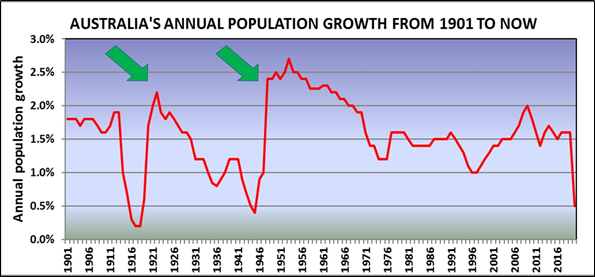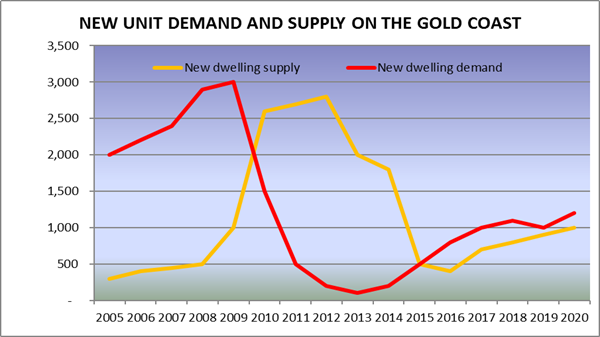A Look At The Supply Side - October 2020
October 23, 2020 / Written by Rich Harvey
By Guest Blogger: John Lindeman, CEO
www.lindemanreports.com.au
With so much media recently focussed mainly on housing demand and prices, John Lindeman takes a look at the supply side to see what the post pandemic market holds for property developers.
Developers are often blamed for building unsightly high density apartments and encouraging speculative investment, yet housing development has been the means by which our cities and towns have grown and been rejuvenated.
 Many of our towns and cities were initially founded on harbours, rivers and bays which offered easy transport for both people and goods. As our cities grew so did the docks, railways, power stations and abattoirs hugging waterside areas. Much of the potentially most attractive parts of major cities became heavily polluted industrial heartlands and residential no-go zones.
Many of our towns and cities were initially founded on harbours, rivers and bays which offered easy transport for both people and goods. As our cities grew so did the docks, railways, power stations and abattoirs hugging waterside areas. Much of the potentially most attractive parts of major cities became heavily polluted industrial heartlands and residential no-go zones.
But look around these areas today and you’ll see a fundamental change reaching fulfilment almost everywhere as the last decaying and derelict wharf, warehouse and factory precincts are transformed into exciting, vibrant suburbs with new dwellings located right on the city’s doorstep. This is the supply side of our housing market operating at its best.
Oversupply is usually caused by a fall in demand
An excess of new housing stock, called ‘over development’ or ‘oversupply’ is blamed for price falls and high rental vacancy rates, but these are usually caused by falling demand. It would be wrong to blame inner urban developers for the high number of empty units in the CBDs of our biggest cities, or for the rapidly falling rents being experienced by their owners.

The finger of blame can only be pointed at the COVID-19 pandemic, which led to border closures and a near total collapse of housing demand from short term renters, students and overseas arrivals.
When our borders are reopened, the numbers of international students, tourists and overseas migrants arriving here are likely to be even higher than in the years before the outbreak of the pandemic. The only times we have previously experienced such border shutdowns were during World War I and World War II, and as the graph shows, our population rose by record levels after each of these conflicts ended.When our borders are reopened, the numbers of international students, tourists

The green arrows point to those years when our population rose rapidly as migrants and refugees sought a new life far away from war torn Europe. There is every reason to believe that the same influx will occur when our international borders reopen, enabling thousands of people to escape covid ravaged and disaster ridden countries.
Any current oversupplies will be temporary
Any current surplus in the supply of housing will quickly disappear, and the demand for more housing will be acute. The reason for this is simple – every overseas arrival needs a place to live. The issue is likely to be that there will not be sufficient properties to meet the demand, especially in areas where overseas arrivals settle.
Property development ties up huge amounts of capital, so developers tend to avoid taking risks by selecting areas that have already experienced strong recent buyer demand, rather than locations which may have the potential for future demand, but have not shown any evidence of this recently.
The developer time lag can take years
This can result in a time lag of several years before rising housing demand can be met by developers. This “developer time lag” has little impact as long as housing demand in any locality remains constantly high or low, but it has a huge effect when changes to housing demand suddenly occur.
As property development progresses in some areas, buyer demand may be falling or other developments are completed, leading to an oversupply before a project is completed. In other locations people wishing to move in or buy property find that there is a shortage of properties available and are forced to wait or look elsewhere.

This graph show how both of these situations occurred in the Gold Coast high rise unit market where speculative buyer demand escalated rapidly before the GFC, many of them being overseas investors. The developer response to rising prices was not achieved until several years later, when the property market bubble had burst.
Unit prices fell by up to forty per cent and many off the plan property buyers were forced to sell at a loss, while others lost their deposits with as projects were abandoned.

Demand for units rose again after the opening of the G-Link light rail (shown above) and the Commonwealth Games, but a much more cautious developer sector is only just responding. This example demonstrates how it can take many years before markets recover from oversupplies and even longer before developers are bold enough to re-enter such a market even after another shortage becomes evident.
Another property boom will be on its way soon
The current situation in our inner urban unit markets is very similar to what took place on the Gold Coast, with the pandemic replacing the GFC as the cause of the demand collapse.
When our borders are open again record number of overseas arrivals will settle here. The demand for housing will escalate, but because of the developer time lag, it will take years before sufficient properties are available on the market to meet the demand. In short, we are likely to experience a repeat of the huge housing shortages that followed the last two world wars, when rents shot up and prices doubled within a few short years.
Although this housing market boom will eventual ripple through all our major city markets, the initial growth areas could be the very same areas that are now suffering from rent and price falls.
John Lindeman is the In-Depth columnist for Your Investment Property Magazine and a popular contributor to property related media. John also authored the landmark best-selling books for property investors, Mastering the Australian Housing Market and Unlocking the Property Market, both published by Wileys. Visit www.lindemanreports.com.au
To have one of the friendly Propertybuyer - Buyers' Agents contact you:
call us on 1300 655 615 today.














































.svg)
.svg)
.svg)



